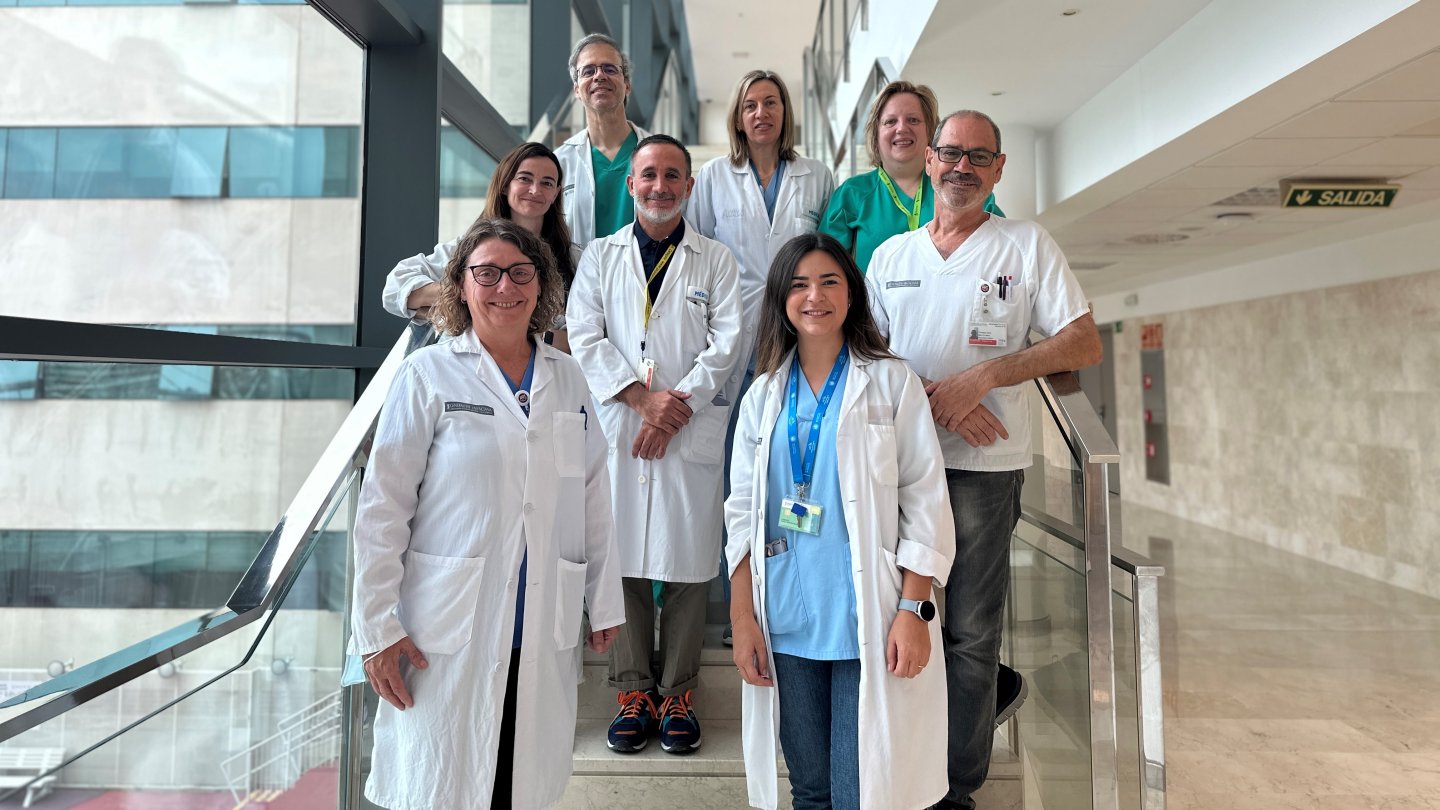News
The IIS La Fe discovers a new gene causing the multiple congenital anomalies-hypotonia-seizures syndrome
Thanks to the research line on fetal malformations by the translational genetics research group, it has been demonstrated for the first time, in a family with a history of fetal losses and perinatal death, that the PIGP gene can produce a severe polymalformative condition
This newly identified clinical phenotype corresponds to the multiple congenital anomalies-hypotonia-seizures syndrome

The Translational Genetics Research Group at the La Fe Health Research Institute (IIS La Fe), in collaboration with the Clinical Commission on Fetal Malformations and Chromosomopathies at the La Fe Hospital in Valencia, has discovered a new clinical entity that falls within the multiple congenital anomalies-hypotonia-seizures syndrome (MCAHS).
The multiple congenital anomalies-hypotonia-seizures syndrome (MCAHS) is an extremely rare disease that mainly affects babies and young children. It is characterized by the presence of seizures (epilepsy) and decreased muscle tone (hypotonia), meaning the child's muscles are looser than normal and have reduced resistance to movement. Additionally, it is accompanied by malformations affecting the cardiac, urinary, gastrointestinal systems, among others. Most affected individuals die before the age of 3.
The concept of a clinical entity refers to a set of signs, symptoms, and characteristics present in a patient that allows the identification and diagnosis of a particular disease or disorder.
In this case, the discovery of this new disease comes from the identification of genetic variants in a family with two deceased children who exhibited a polymalformative condition. These genetic variants have shown that the PIGP gene, previously described as a cause of epileptic encephalopathy, is capable of producing severe congenital anomalies.
Until now, only three families with pathogenic genetic variants in the PIGP gene related to central nervous system alterations and causing epilepsy type 55 had been published. However, the novelty of the article "Expanding the phenotype of PIGP deficiency to multiple congenital anomalies-hypotonia-seizures syndrome," published in the journal Clinical Genetics, is that it describes a new clinical entity related to this gene and proposes to include it as a cause of a complex polymalformative syndrome called multiple congenital anomalies-hypotonia-seizures syndrome.
Therefore, the advancement in the knowledge of the genetic causes of fetal anomalies represents a great benefit for affected families in terms of improving perinatal care, disease prognosis, genetic counseling, and reproductive options or alternatives based on the obtained results.
Multidisciplinary Collaboration
This multidisciplinary collaboration of researchers from the Translational Genetics Research Group with obstetricians, radiologists, anatomopathologists, neonatologists, pediatricians, and surgeons, along with the introduction of new massively parallel sequencing techniques, has led to a 41% improvement in diagnostic performance in pregnant women with congenital anomalies evaluated by the Commission and presenting a high suspicion of genetic disease.
As explained by the lead author of this work, Dr. Carla Martín, "approximately 3% of pregnancies involve congenital anomalies that, in many cases, do not have a diagnosed cause for these alterations," making this finding a significant advancement in the etiopathogenesis of congenital malformations.
The Clinical Commission on Fetal Malformations/Chromosomopathies at the La Fe University and Polytechnic Hospital was established in 2013 and consists of a multidisciplinary group of 18 individuals, including radiologists, neonatologists, pediatric specialists in Neuropediatrics and dysmorphology, anatomopathologists, pediatric surgeons, obstetricians, and geneticists. This Commission, with a decade-long trajectory, evaluates approximately 170-200 cases of polyformated fetuses and neonates each year from across the Valencian Community.
Martín-Grau C, Orellana Alonso C, Roselló Piera M, Pedrola Vidal L, Llorens-Salvador R, Quiroga R, Marín Reina P, Rubio Moll JS, Gómez Portero R, Martínez-Castellano F. Expanding the phenotype of PIGP deficiency to multiple congenital anomalies-hypotonia-seizures syndrome. Clin Genet. 2023 Aug;104(2):245-250. doi: 10.1111/cge.14340. Epub 2023 May 1. PMID: 37125481.







